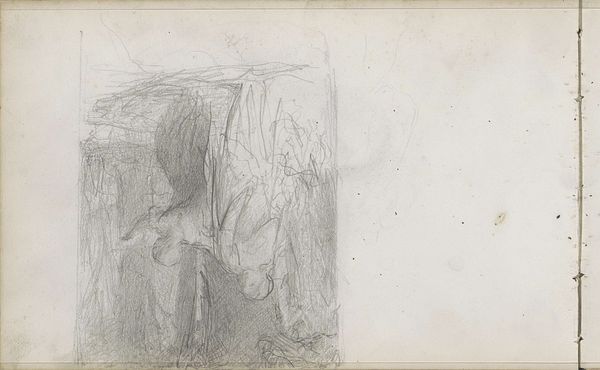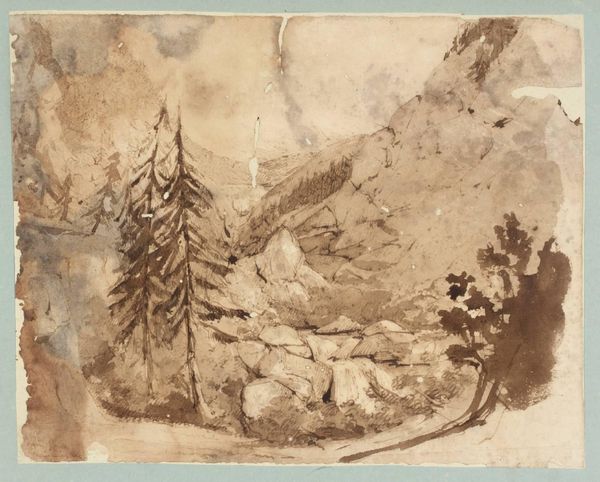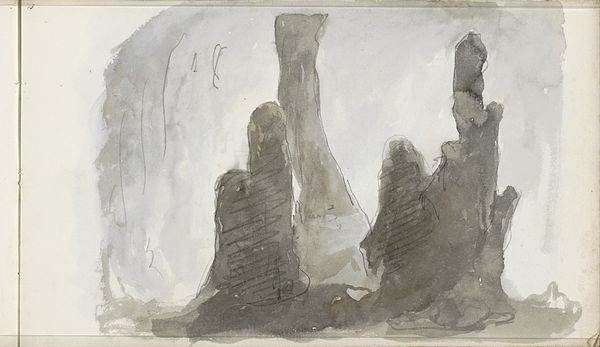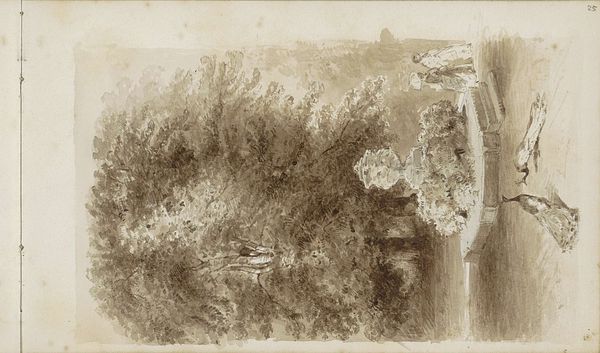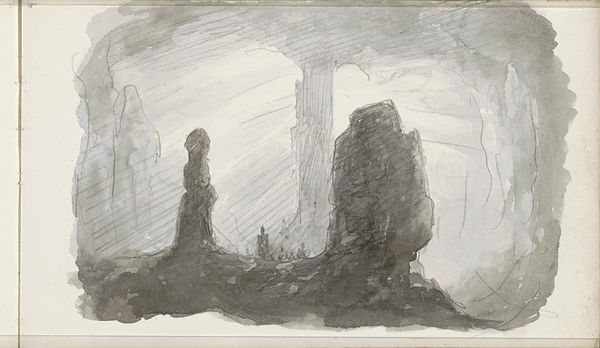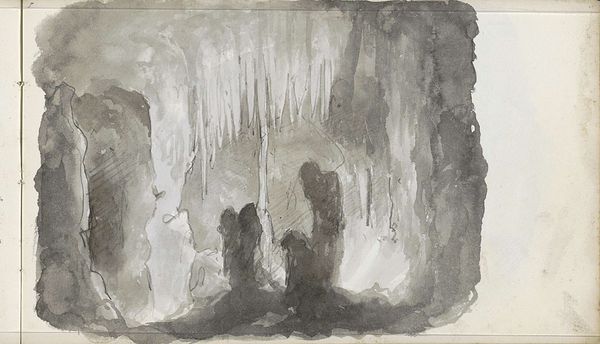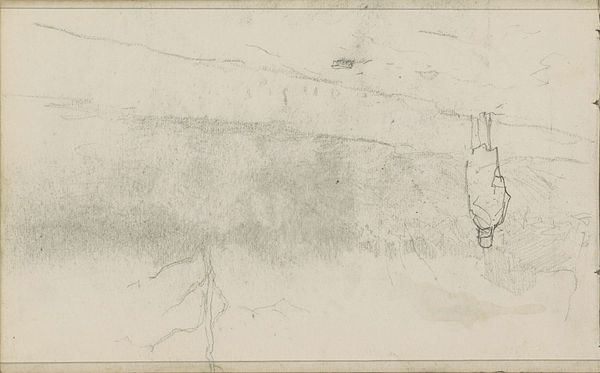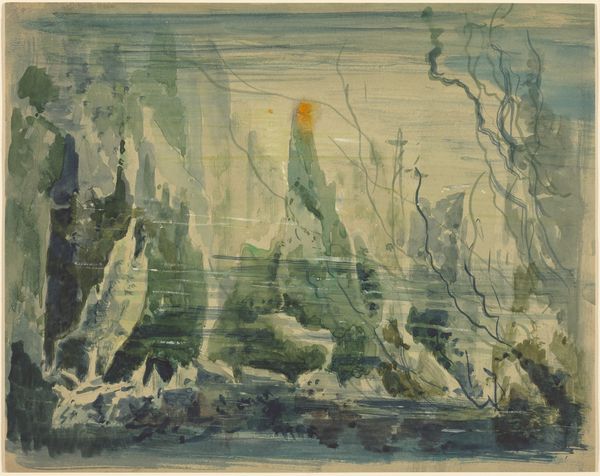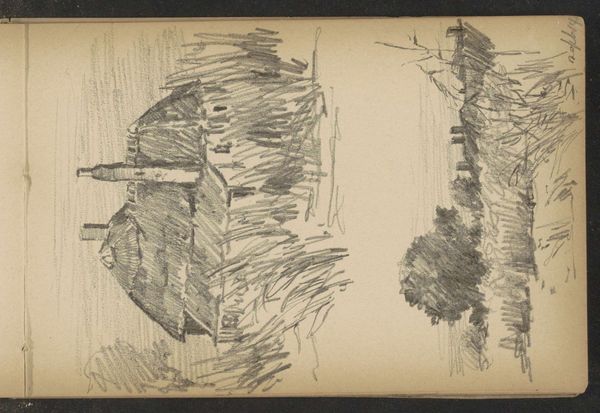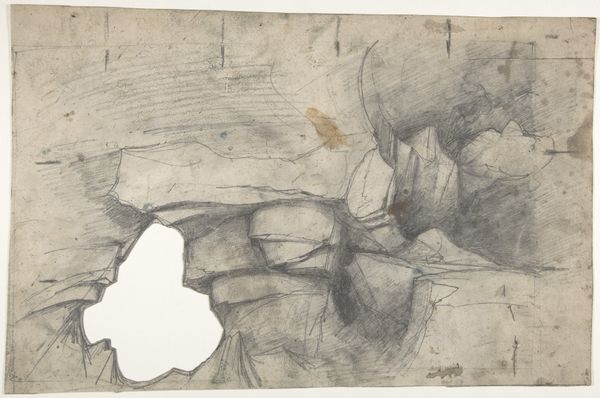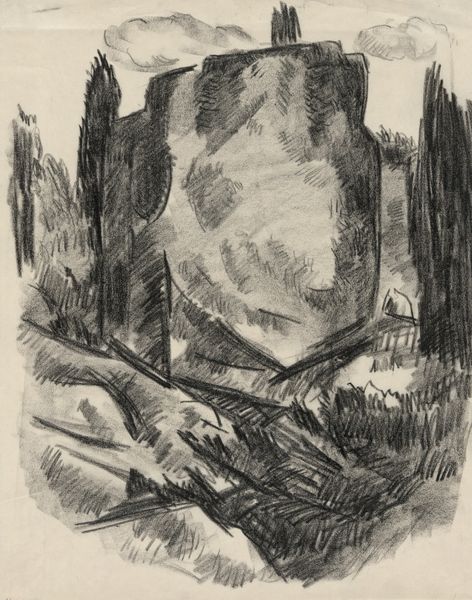
#
amateur sketch
#
toned paper
#
light pencil work
#
pencil sketch
#
incomplete sketchy
#
possibly oil pastel
#
ink drawing experimentation
#
watercolour illustration
#
sketchbook art
#
watercolor
Copyright: Rijks Museum: Open Domain
Petrus Johannes Schotel made this drawing, "Druipsteengrot," using pen in gray ink and brush in gray wash. Note the swift, assured way in which the artist has worked. The ink lines are quick and decisive, delineating the cave's rough, textured surfaces and the mysterious figure within. The washes of gray ink add depth and atmosphere, evoking the damp, echoing space of the grotto. Drawings like this were relatively easy to produce, and were bought and sold in quantity during the 19th century. Schotel was not only invested in Romanticism, but also in a developing commercial market for art. The ease and efficiency of the medium allowed for a degree of spontaneity, while also meeting the demands of the art market. It's fascinating how Schotel uses the inherent qualities of ink and paper to capture the unique environment of the cave. This work reminds us that even a simple drawing can reveal complex relationships between material, process, and the broader social context of art production.
Comments
No comments
Be the first to comment and join the conversation on the ultimate creative platform.
